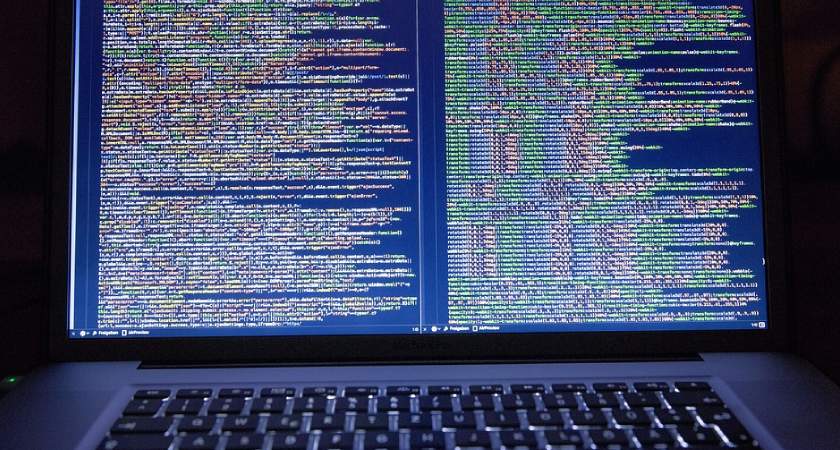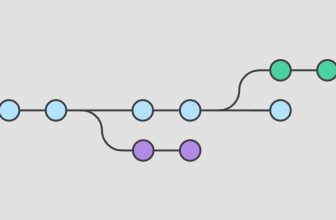
Here at SkillComplete, our team of experienced web developers and technical enthusiasts has conducted thorough research of all the available courses on leading online learning platforms such as Udemy, Coursera, Edx, Linkedin learning, and compiled the list of Best Splunk courses, tutorials, training, certifications, and classes for you. We have also listed free resources to help you in your learning journey. The listed courses are suitable for beginners, intermediate, and advanced learners. Let us first take a look at a brief introduction about Splunk.
Handling and analyzing big data is a complex task, and hence can be challenging for most developers. In such a scenario, Splunk plays its role of making data analysis relatively easy. This software platform is used for monitoring, searching, analyzing, and visualizing machine-generated data in a real-time scenario. It captures, indexes, and correlates large volumes of data into searchable platforms to produce graphical representations, alerts, dashboards, and visualizations for easy understanding.
Data from various sources such as web servers, databases, applications, and cloud-based resources can be monitored using Splunk. In organizations where data management is critical in making business decisions, professionals with Splunk knowledge are sought after.
Features of Splunk:
- Ingesting data – Splunk can work with different forms of data such as Json, Xml, and even unstructured data like logs. It can convert unstructured data into meaningful formats.
- Data Indexing – To make the search and query operations faster, Splunk indexes the ingested data.
- Searching data – The user can manipulate the indexed data to generate metrics, predict future trends, and analyze patterns in the ingested data.
- Using Alerts – The user can trigger emails and RSS feeds to identify particular patterns in the ingested data.
- Building dashboards – The user can utilize the Splunk dashboard to view the results in the form of charts, pivots, and can generate reports of the same.
Here is the consolidated list of the best Splunk courses online, the shortlisted courses will help you save your precious time and invest it in learning Splunk itself.
Best Splunk courses and tutorials online
Splunk 2022 – Beginner to Architect – Udemy
It is the highest-rated Splunk course on the Udemy platform, rated by more than ten thousand enrolled students. This course is specifically designed for beginners who desire to master the Splunk infrastructure. It provides a step-by-step guide to master writing Spunk queries, building dashboards, troubleshooting, and access controls. It is a beginner-friendly course that uses a practical approach to build a solid foundation in Splunk.
Key points :
- Users will learn how to build highly available clustering architectures.
- Users will learn how to design and create dashboards to detect anomalies.
- Users will learn how to implement Splunk in Docker Containers.
- Users will learn to troubleshoot and manage Splunk efficiently using industry best practices.
- This tutorial is updated regularly to accommodate changes in the new versions of the software.
Pre-requisites: All that is required is a computer with an internet connection.
Duration: 11 hours | Level: Beginner | Access: Lifetime | Certificate: Certificate of completion
The Complete Splunk Beginner Course [2021] – Udemy
This course is a best-seller on Udemy. Learn from the most popular Splunk instructors on Udemy. It is the first detailed course on Udemy that covers the latest Splunk 8x. If you are a beginner who intends to clear the Splunk certification exam, then this course is tailor-made for you. It has demos, exercises, quizzes, and even homework to help you gain knowledge to pass the certification exam. This course provides detailed information on head clustering, heavy forwarders, indexer clustering, configuration files, authentication (yes, even with LDAP), and much more.
Key points:
- Users will learn how to deploy Splunk in different environments, and with different architectures.
- Users will understand how Splunk license management works.
- Users can explore Splunk apps and the thriving Splunkbase community
- Users will be prepared for the Splunk Enterprise 8x Certified Admin exam.
- Users can master all aspects of Splunk configuration files.
- Learn about managing Splunk users, roles, and authentication.
- Users will be able to get data into Splunk.
- Users will be able to build distributed search head clusters.
- Users will understand how Splunk processes data.
Pre-requisites: Understanding the navigation of the Linux file system and installing software on Linux and windows is preferred.
Duration: 4 hours | Level: All levels | Access: Lifetime | Certificate: Certificate of completion
Learning Splunk – LinkedIn Learning
Learn Splunk by an expert DevOps Engineer, Josh Samuelson. In this course, you can learn the basics of how Splunk works and how it can help you monitor data from multiple systems: web servers, databases, applications, and even cloud-based resources.
You will explore the searching and reporting features of Splunk, and also learn about setting up alerts for catching potential issues before they become critical. In addition to this, you can learn how to set up dashboards to monitor the performance of your systems. Instructor Josh Samuelson illustrates the lessons with examples from real-world scenarios, where Splunk is used for centralized logging and reporting from multiple systems.
Key points:
- Users will learn the major features of Splunk searching and reporting.
- Users will learn various filtering techniques for searching.
- Users will learn to create dashboards in Splunk and generate reports.
- Users will learn how to create an Alert.
- Users will learn practical Splunk features implementation.
Pre-requisites: Understanding the navigation of the Linux file system and installing software on Linux and windows is preferred.
Duration: 1.5 hours | Level: Beginner | Access: Lifetime | Certificate: Certificate of completion
Splunk Fundamentals – PluralSight
This is a skill path to learn Splunk fundamentals. This learning path contains over ten courses to help you build a solid foundation of Splunk. The path has courses for all learner levels such as beginner, intermediate and advanced. This includes a basic understanding of SPL searching and reporting commands. It will also cover, how to create knowledge objects, use field aliases, and calculated fields. It will help the user learn how to create tags and event types, use macros, and create workflow actions and data models. Finally, it will provide information on normalizing data with the Common Information Model in either the Splunk Enterprise or Splunk Cloud platforms.
Key Points:
- Users will be able to install and configure Splunk.
- Users will be able to perform Compose searches.
- Users will be able to construct reports, dashboards, and alerts.
- Users will be able to compose advanced searches.
- Users will be able to generate visualizations using commands.
- Users will be able to create search macros.
- Users will learn to create fields, field aliases, and calculated fields.
- Users will be able to create tags and event types.
- Users will be able to correlate events with transactions.
- Users will be able to create workflow actions.
- Users will be able to create data models.
- Users will learn to employ the Splunk Common Information Model (CIM) Add-On.
Pre-requisites: No formal requirements but knowledge of Windows and Linux operating systems is encouraged.
Duration: 16 hours | Level: All levels | Access: Lifetime | Certificate: Certificate of completion
Getting to Know Splunk: The Hands-On Administration Guide – Udemy
If you are getting overwhelmed by the unstructured logs, and intend to use Splunk to make things simpler, this course is for you! In this course, Tom will teach you how to get started with Splunk from the ground up. An Amazon Web Services (AWS) Ubuntu image will mirror the instructor’s examples in the lab activities. You will learn the basics of Splunk, and how to use the Splunk web interface to find the data you require. You will be able to build your own Splunk environment, add and normalize data to the Common Information Model (CIM), create dashboards, and find events in your data. Finally, you will acquire a deeper understanding of more advanced searching techniques that will particularly be beneficial for Network, Security, and System administration professionals.
Key points:
- Users will learn how to build a development Splunk environment from scratch on a Linux server.
- Users will learn how to onboard data into Splunk.
- Users will understand the importance of the Common Information Model (CIM).
- Users will learn how to normalize the data using Splunk apps.
- Users will learn how to generate basic reports and construct dashboards using your new Splunk instance.
- Users will understand why leaving systems exposed to the Internet is a bad idea.
Pre-requisites: No previous (administrator or user) Splunk experience is necessary. You will need a computer with a web browser and SSH client, as well as a Linux instance to use as your Splunk host. Although not a requirement, familiarity with the Linux command line is preferred.
Duration: 4 hours | Level: Beginner | Access: Lifetime | Certificate: Certificate of completion
Splunk Hands-on – The Complete Data Analytics using Splunk – Udemy
Are you working with huge volumes of data? This Splunk training will help you learn the fundamental skills needed to analyze machine-generated data using Splunk. It is a course that provides demos and practical exercises on the data collection process. By the end of this course, you will not only be able to successfully implement Splunk in your workspace but also will learn how to correlate events, perform dynamic searching and understand workflows.
Key points:
- Users will learn how to set up a Splunk enterprise environment.
- Users will learn how to build a production environment.
- Users will learn how to use Splunk inputs.
- Users will learn parsing and searching techniques.
- Users will learn Splunk resource management.
- Users will learn how to implement knowledge objects.
- Users will learn how to create lookups, field Aliases, and calculated Fields.
- Users will learn how to create tags, field extractions, and event types.
- Users will comprehend how to create workflow actions, alerts, and scheduled reports.
- Users will learn how to create macros and data models.
Pre-requisites: Basic knowledge of IT operations and the Data Analytics domain. The knowledge of the Linux bash command will be an added advantage.
Duration: 55 hours | Level: All levels | Access: Lifetime | Certificate: Certificate of completion
Splunk Developer Certification Practice Tests 2021 – Udemy
The Splunk Certified Developer exam is the final step towards the Splunk Certified Developer certification. This is highly technical certification and tests your understanding of behavior and visualization, building apps using the Splunk Web Framework, and REST endpoints. It consists of three full-length practice tests that are an exact mock-up of the actual exam.
Key points:
- Users will feel prepared to answer how to use tokens, improve performance, and customize views.
- Users will feel prepared to answer how to use event handlers, add simple XML extensions.
- Users will feel prepared to answer questions regarding Splunk apps, planning app development, and adding data.
- Users will feel prepared to answer how to create apps, SplunkJS views, and a KV store.
- Users will be able to answer how to use the Splunk REST API, packaging apps, and calling Splunk REST endpoints with curl.
- Users will be able to answer how to embed calls to REST endpoints.
Pre-requisites: Knowledge of Splunk platform to appear in the certification exam.
Duration: Self-paced | Level: All levels | Access: Lifetime | Certificate: Certificate of completion
Splunk Training + Certification – Splunk
This course introduces enrollees to what machine data is and how Splunk can leverage operational intelligence to investigate and respond to incidents in their organizations. You can learn at your own pace through these free, video-only online courses accessible anytime, anywhere.
Key points :
- Users will learn what machine data is and where it comes from.
- Users will understand the role of Operational Intelligence.
- Users will learn the core features of Splunk.
Pre-requisites: No formal requirements but knowledge of Windows and Linux operating systems is encouraged.
Duration: Self-paced | Level: Beginner | Access: Lifetime | Certificate: Certificate of completion
Conclusion
That is all about the best Splunk courses online. Splunk is a horizontal technology used for application management, security, and compliance. It is used for business and web analytics and supports versatile technologies. Splunk is an advanced technology that searches log files that are stored in a system. It also helps in operational intelligence. Splunk has many uses and it does not require any complicated databases, connectors, or controls. It can also be used as a cloud application that is highly scalable and reliable. Hope the above list of consolidated best courses helps you in your learning journey.
Thanks for reading this article. If you found the list useful, share it with your friends and colleagues. In case you have any questions or feedback, please feel free to drop a note.
Happy learning!



![Best Jenkins Courses Online – Updated [April 2024]](https://skillcomplete.com/wp-content/uploads/2022/01/jenkins-blog-1-336x220.jpg)